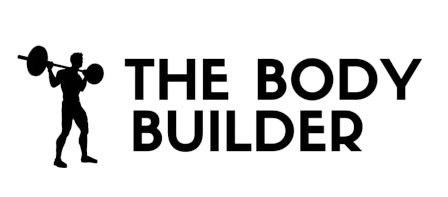Alternating Kettlebell Row
Alternating Kettlebell Row is a great exercise for developing strength and stability in the upper back muscles. It is a compound exercise that works the lats, rhomboids, and traps. To perform this exercise, start with two kettlebells placed in front of your feet. You then need to bend the knees slightly and push the butt out as you reach down to grab the kettlebells. Pull one kettlebell off the floor while holding on to the other. Retract the shoulder blade of the working side as you flex the elbow, drawing the kettlebell towards your stomach or rib cage. After completing the row, lower the kettlebell and then repeat with the other arm. This exercise is a great way to build strength and stability in the back muscles.
Type:
Strength
Muscles Used:
Middle Back
Level:
Intermediate
Equipment:
Kettlebells
Benefits Of This Exercise
- Strengthens and stabilizes the upper back muscles, such as the lats, rhomboids, and traps.
- Develops strength in the core, arms, and shoulders.
- Improves posture by strengthening the back muscles.
- Helps to prevent injuries by strengthening the muscles and joints.
- Improves coordination and balance.
- Increases functional strength for everyday activities.
- Improves cardiovascular health.
Step by Step Instructions For Alternating Kettlebell Row
- Start by placing two kettlebells in front of your feet.
- Bend your knees slightly and push your butt out as much as possible.
- As you bend over to get into the starting position, grab both kettlebells by the handles.
- Pull one kettlebell off of the floor while holding on to the other kettlebell.
- Retract the shoulder blade of the working side.
- Flex the elbow, drawing the kettlebell towards your stomach or rib cage.
- Lower the kettlebell in the working arm.
- Repeat the previous steps with your other arm.
Warm Up Tips
- Before starting the Alternating Kettlebell Row, make sure to warm up your body with some light cardio exercises such as jogging or jumping jacks. This will increase blood flow and prepare your muscles for the workout.
- Perform some dynamic stretches for your upper back and shoulders. This could include arm circles, shoulder rolls, and torso twists. These stretches will help loosen up the muscles and improve flexibility.
- Do a few sets of bodyweight rows or band rows to activate the muscles you will be targeting during the Alternating Kettlebell Row. This will help activate the lats, rhomboids, and traps, making them more engaged during the exercise.
- Practice the movement pattern without any weights first. Stand with your feet shoulder-width apart and hinge at the hips, bending your knees slightly. Reach down towards the kettlebells, but without actually grabbing them. This will help you get familiar with the proper form and technique.
- Start with a lighter weight kettlebell and gradually increase the weight as you feel more comfortable and confident with the exercise. This will prevent any potential injuries and allow you to progress at a safe pace.
Alternating Kettlebell Row Safety Tips
- Make sure to bend your knees slightly and push your butt out as much as possible to maintain a stable and balanced position.
- Retract the shoulder blade of the working side to engage the upper back muscles and prevent any strain or injury.
- Keep your core engaged and maintain a neutral spine throughout the exercise to protect your lower back.
- Avoid using excessive weight that may compromise your form or lead to muscle imbalances. Start with lighter kettlebells and gradually increase the weight as you become more comfortable and confident.
- Focus on proper breathing technique by inhaling as you lower the kettlebell and exhaling as you perform the row, this will help stabilize your core and enhance your overall performance.
- Do not rush the movement. Control the kettlebell throughout the entire range of motion to maximize the effectiveness of the exercise and reduce the risk of injury.
- If you experience any pain or discomfort during the exercise, stop immediately and consult with a fitness professional or healthcare provider.
- Ensure that the kettlebells are securely gripped and that your wrists are in a neutral position to prevent any strain on the joints.
- Always warm up before performing the alternating kettlebell row to prepare your muscles and joints for the exercise.
- Listen to your body and adjust the exercise as needed. If you find it difficult to maintain proper form or if you have any
Incorporating Into Other Workouts
To incorporate the Alternating Kettlebell Row into your workouts, you can follow these steps:
1. Warm up: Start with a dynamic warm-up to prepare your body for exercise. This can include jogging, jumping jacks, or arm circles.
2. Set up: Place two kettlebells in front of your feet. Ensure that you have enough space to perform the exercise without any obstructions.
3. Starting position: Bend your knees slightly and push your butt out as much as possible. This will engage your lower body and provide stability during the exercise. Reach down and grab both kettlebells by the handles.
4. Execution: Pull one kettlebell off the floor while holding on to the other kettlebell. As you do this, retract the shoulder blade of the working side. Flex the elbow and draw the kettlebell towards your stomach or rib cage. Focus on squeezing your back muscles as you perform the row.
5. Alternating sides: After completing the row with one arm, lower the kettlebell back down and repeat the movement with your other arm. Alternate between the left and right sides for a balanced workout.
6. Reps and sets: Depending on your fitness level and goals, perform a suitable number of reps and sets. Start with 8-12 reps per arm and aim for 2-3 sets. Gradually increase the weight and intensity as you progress.
7. Proper form: Pay attention to your form throughout the exercise. Keep your back straight, engage

